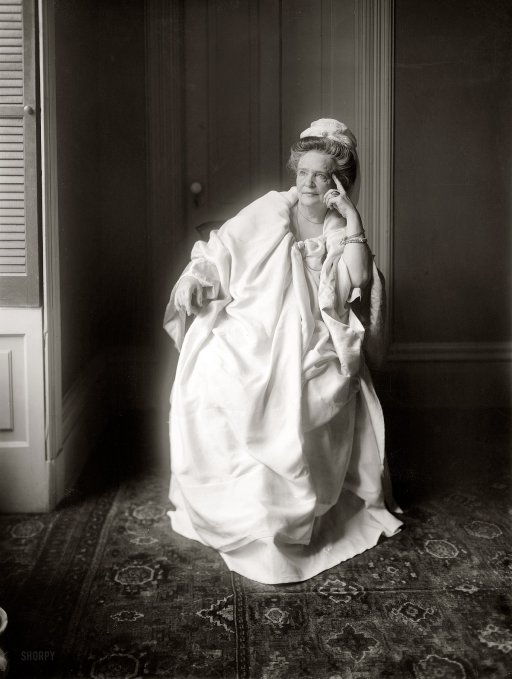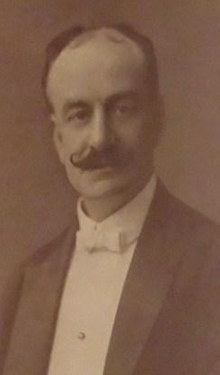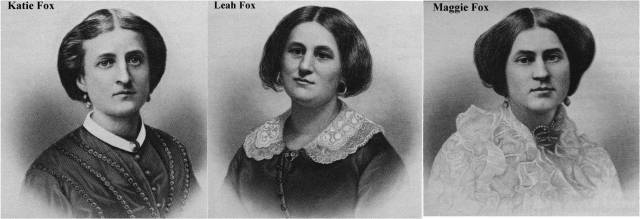Ann O’Delia Diss Debar
There are few 19th-century mediums who utilized spiritual trends as skillfully as Madame Ann O’Delia Diss Debar (probably born Editha Salomen, 1849 – 1909 or later).

Diss Debar as Swami Horos
Not only did she manage to run a short-lived but successful spirit painting racket during the 1880s, she also established a school for occult sciences that granted worthless degrees to would-be “swamis,” and conned MacGregor Mathers, the head of the Hermetic Order of the Golden Dawn, out of the order’s sacred rituals by claiming to be Anna Sprengel, the Golden Dawn’s patron adept. Diss Debar (calling herself Madame Horos) used the stolen rituals to establish her own esoteric society. She also procured “brides” for her lecherous husband (possibly not her legal husband), used the rituals as part of an unorthodox wedding ceremony–eventually embarrassing Mathers when the scam hit the headlines–and made off with a pile of jewels from one unwitting victim.
Ann O’Delia Diss Debar’s origins are somewhat obscure since neither the transcendent Madame nor her horrified kin really wished to claim their family ties. That said, the medium was likely born in Harrodsburg, Kentucky in 1849, to Eliza Salomon and her husband “Professor” John Salomon. While little is known about her early years, Houdini claims that she made her way to Baltimore, cheating the gullible and the wealthy–for Editha, a lucrative combination–out of $250,000. As if to further illustrate her general depravity, Houdini writes that Editha “gave herself up to luxury and extravagance […] smoking cigarettes impregnated with opium” and was eventually committed to Bellevue Hospital (69).
She herself claimed to have been born in Italy in 1854, the daughter of King Ludwig I of Bavaria and his notorious mistress, the dancer Lola Montez, and that she was raised by foster parents from a young age.
She apparently became involved with Victoria Claflin Woodhull and Tennessee Claflin, popular exponents of spiritualism, in the 1860s and 1870s, and was a disciple of Madame Blavatsky.
According to E. J. Dingwall, Editha was indeed institutionalized, but it wasn’t because of a growing addiction to opium. Editha told Woodhull that she was without money and hope and planned either to commit suicide or prostitute herself if she could find no relief. Woodhull responded by giving the distraught young woman $5 and some encouragement, Editha confided that she wished to become a lecturer like Woodhull (Dingwall Some Human Oddities 130).
Woodhull’s charity was poorly repaid. In June 1870, Editha filed a complaint against Woodhull and her sister claiming that she had given the women two diamond-encrusted gold rings, valued at $4000, and $2000 in United States Treasury notes for safekeeping. Editha further claimed that the sisters refused to either surrender her property or reimburse her for her loss. Editha’s gamble was a brash one. It didn’t pay off.
The courtroom was so full of curious spectators that Judge Joseph Dowling (the same justice who convicted and then freed William Mumler, the fraudulent spirit photographer) moved the proceedings to a larger room. Once settled, the court heard its first witness, Miss Editha Gilbert Montez. Editha provided a rather convoluted account of the transaction and seemed more interested in showing the court how central she was to Woodhull and Clafin’s affairs. According to Editha, the sisters were so convinced of her potential as a lecturer and clairvoyant, they immediately employed her. She ended her testimony by voicing dismay at Woodhull’s deception: “I thought her honest, and so trusted her” . Editha’s tongue did not cluck for long.
The defense soon introduced a parade of witnesses who presented a different view of the complainant. Editha had registered as Blanche Solomon at the Belvidere House, telling the proprietor that a man named John Hecker would pay her rent. The beleaguered Hecker could only pay for the first week of Editha’s four week stay and was also stuck with her dressmaker’s bill. Editha then changed identities and introduced herself as Claudia D’Arvie, a poor girl who had been evicted by her own mother and kicked out of a Bavarian convent. For the suffragist Sarah F. Norton, Editha became Lola Montez’s abandoned daughter who “hadn’t a dollar in the world” but whose station compelled her to stay at the Astor House for $19 a night. Eventually, Woodhull herself took the stand and claimed no knowledge of Editha’s missing cash and trinkets. She told the court that Editha “asked for bread and had been assisted.” Needless to say, the complaint was dismissed and the complainant sent to the “Commissioners of Public Charities for medical examination as to her sanity”. According to Dingwall, Editha was taken to a Blackwell Island asylum.
It was there that Editha met a French journalist named Paul Noel Messant. After a brief courtship, they married on February 5, 1871. Editha, maintaining her fictional ancestry, listed her parents as Lola Montez and Ludwig, King of Bavaria. Poor Mr. Messant only made it through one year of marriage to Editha and died in 1872. Houdini believed (perhaps rightly) that Editha murdered him.
Editha started her full fledged mediumship. She claimed to be the wife of West Virginia statesman Joseph H. Diss Debar, and produced “spirit paintings” by Old Masters. She was prosecuted several times for fraud. She was convicted of fraud after persuading elderly lawyer Luther Marsh to give her his townhouse on New York’s Madison Avenue, and sentenced to 6 months imprisonment in June 1888.

Carl Hertz, Magician and debunker of medium and spiritualism
The magician Carl Hertz appeared at the prosecution for the Swami Laura Horos (also known as Mme. Diss Debar) trial in New York. Hertz helped send Mme. Diss Debar to jail by duplicating in court the tricks she had used in her séances.
Hertz was a debunker of mediums and Spiritualism.
Hertz corresponded with the magician Harry Houdini about the tricks of spiritualist mediums. In 1923, Hertz had sent Houdini a letter revealing a trick he used to fool the jury at the court trial for Mme. Diss Debar. In his book A Magician Among the Spirits (1924), Houdini included a copy of this letter.
Mme. Diss Debar was imprisoned for two years in Illinois for another fraud, under the name Vera P. Ava; and as Editha Loleta Jackson, she was expelled from New Orleans in May 1899 as a swindler. She was imprisoned for 30 days later that month.
She married Frank Dutton Jackson in Louisiana in 1899, calling herself Princess Editha Lolita. The couple went to England in the 1890s, calling themselves “Swami Laura Horos” and “Theodore Horos”. They set up a “Purity League” at the Theocratic Unity Temple, near Regent’s Park in London, and worked as fortune tellers and diviners, advertising their services in newspapers, such as The People and the Western Morning Advertiser.
They were arrested in Birkenhead in September 1901, and charged with obtaining property by false pretenses, rape and buggery. The later charges seems to have arisen from louche sexual practices at their temple in London. The Swami was sentenced to 7 years imprisonment, and her husband to 15 years.
She spent some time in South Africa, calling herself Helena Horos of the College of Occult Sciences, and ran a fruitarian colony in Florida. She was in Cincinnati in 1909, under the name Vera Ava, but her later whereabouts are unknown.
Madame Diss Debar was an interesting character and a damned prolific criminal. Houdini blamed the Spiritualist movement for “mothering this immoral woman.” The New York Times called her a “wonderful crook who without personal charm or attraction has set nations agog with her crimes since her girlhood.
References:
- Harry Houdini. (1924). A Magician Among the Spirits
- Milbourne Christopher. (1969). Houdini: The Untold Story. Crowell
- Eric John Dingwall. Some human oddities;: Studies in the queer, the uncanny. University Books (1962)
- John Mulholland (1938). Beware Familiar Spirits. Scribner.
